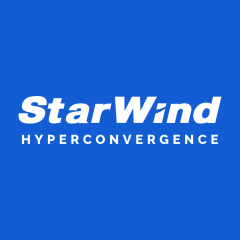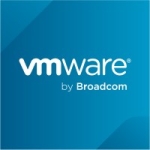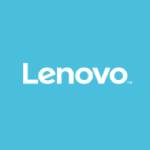What is our primary use case?
We purchased two of these appliances to replace a three-node Hyper-V cluster on Dell blade servers/MXL blade switches with a VNXe3200 as storage. We were able to replace our entire M1000e enclosure and greatly simplified our (admittedly humble) infrastructure. Change from iSCSI over 1GB to local storage was also welcome. These two appliances now house 100% of our VMs and are a breeze to maintain. On-boarding was well supported. We were able to rack, configure, and start migrating Hyper-V VMs in less than a week.
How has it helped my organization?
These appliances have been great for our Failover Cluster, combining storage, network, and compute resources in a single package. StarWind's Virtual SAN software replicates storage in the background, letting each node in the cluster use its own local storage instead of having to create an actual storage network. The ease between setting up the HCA appliances and my previous setup is significant, as is ongoing maintenance.
StarWind also offers ProActive Support that remotely monitors the appliances and automatically opens a ticket and initiates contact when a problem is discovered. As the only IT employee here, it's been pretty great.
It did not hurt that the price for the hardware and three years of support cost less than the disparate hardware the cluster used to run on. End users are also pleased with the noticeable performance increase from switching to local storage from 1GB ethernet.
What is most valuable?
Surprisingly, it's the support that's been most helpful. I'm a one-person IT department. I have monitoring in place, however, I need to sleep sometimes. There were issues with our backup software early on that resulted in VMs failing. I'm not going into detail as the issue was with the backup software, not the HCAs.
I woke up to detailed emails that let me know what had happened, along with event logs and explanations about why it happened. Even though the issue was with the backup software, they were still invaluable in solving the issue.
What needs improvement?
CSVs require the storage to be configured through iSCSI, even though the storage is local. It imparts a small performance hit that's easily overshadowed by the performance increase from getting off 1GB ethernet.
The Virtual SAN setup also requires more actual storage than a traditional SAN. My two-node cluster means I need double the amount of physical storage before any RAID is taken into account. A two-node cluster with RAID 1 means one-quarter of the storage you purchase is available.
Even though the support was great, getting the same email three to four mornings a week with the same issue got a little disheartening.
For how long have I used the solution?
I've used the solution for just shy of one year.
What do I think about the stability of the solution?
I've had zero issues with the appliances with anything other than our backup software.
Edit: I've been asked to clarify this. I had an issue with our backup software that was 100% on them. The errors involved VSS and a CBT driver that needed reinstalling. It was a little annoying getting emails every morning from ProActive Support while I got it straightened out, but the issue was between Windows and my backup/DR solution.
What do I think about the scalability of the solution?
We're small and will likely not have to worry about any serious upscaling in the near future, however, it would be very simple to throw more appliances into the cluster should we need to.
How are customer service and support?
They've always been knowledgeable and friendly.
How would you rate customer service and support?
Which solution did I use previously and why did I switch?
We used Dell blade servers/switches with a VNXe3200 SAN. They worked fine, however, the few times something went wrong it made tracking down the issue more difficult. There were also no single administration tools that handled all three hardware systems.
How was the initial setup?
On-boarding was heavily guided. Once racked, powered on, and joined to the domain, they helped with the rest.
What about the implementation team?
We had the help of a vendor team, and they were very efficient. I was up and running quickly.
What was our ROI?
I have no idea. I'm here to work with technology, not accounting.
What's my experience with pricing, setup cost, and licensing?
We provided our own Windows Server Datacenter licenses. We have a state contract and get them at a reduced rate. I'm sure our reseller would have been happy to include them on the quote as well, though. The software does have ongoing costs for maintenance/support.
Which other solutions did I evaluate?
We did not look at other options, really. These fit my needs perfectly and were affordable. Had I more time/resources at my disposal, I probably would have sought out other options. In this case, these appliances fit my needs.
What other advice do I have?
These appliances are probably the best hardware decision I've made in my decade employed here.
Which deployment model are you using for this solution?
On-premises
Disclosure: My company does not have a business relationship with this vendor other than being a customer.

















